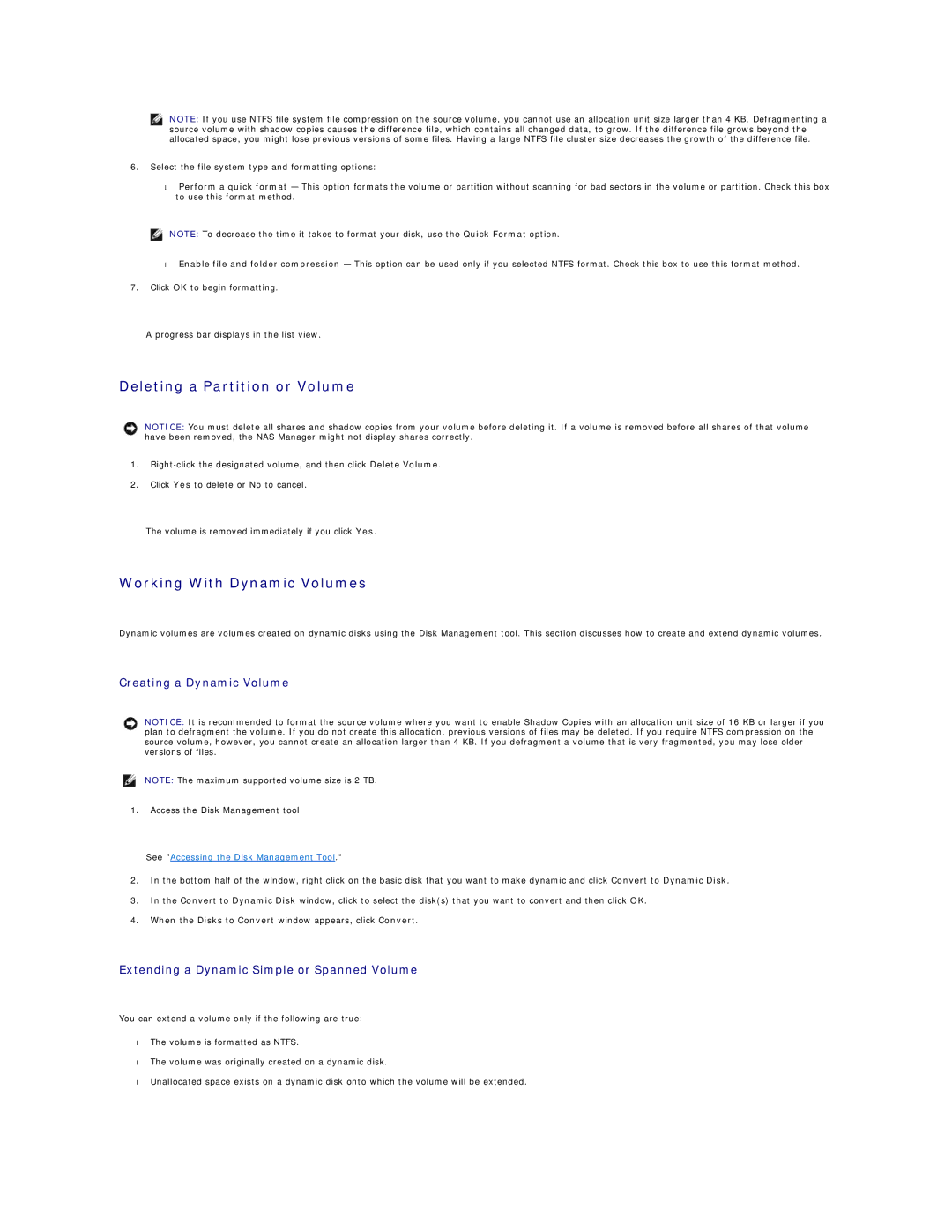NOTE: If you use NTFS file system file compression on the source volume, you cannot use an allocation unit size larger than 4 KB. Defragmenting a source volume with shadow copies causes the difference file, which contains all changed data, to grow. If the difference file grows beyond the allocated space, you might lose previous versions of some files. Having a large NTFS file cluster size decreases the growth of the difference file.
6.Select the file system type and formatting options:
•Perform a quick format — This option formats the volume or partition without scanning for bad sectors in the volume or partition. Check this box to use this format method.
NOTE: To decrease the time it takes to format your disk, use the Quick Format option.
•Enable file and folder compression — This option can be used only if you selected NTFS format. Check this box to use this format method.
7.Click OK to begin formatting.
A progress bar displays in the list view.
Deleting a Partition or Volume
NOTICE: You must delete all shares and shadow copies from your volume before deleting it. If a volume is removed before all shares of that volume have been removed, the NAS Manager might not display shares correctly.
1.
2.Click Yes to delete or No to cancel.
The volume is removed immediately if you click Yes.
Working With Dynamic Volumes
Dynamic volumes are volumes created on dynamic disks using the Disk Management tool. This section discusses how to create and extend dynamic volumes.
Creating a Dynamic Volume
NOTICE: It is recommended to format the source volume where you want to enable Shadow Copies with an allocation unit size of 16 KB or larger if you plan to defragment the volume. If you do not create this allocation, previous versions of files may be deleted. If you require NTFS compression on the source volume, however, you cannot create an allocation larger than 4 KB. If you defragment a volume that is very fragmented, you may lose older versions of files.
NOTE: The maximum supported volume size is 2 TB.
1.Access the Disk Management tool.
See "Accessing the Disk Management Tool."
2.In the bottom half of the window, right click on the basic disk that you want to make dynamic and click Convert to Dynamic Disk.
3.In the Convert to Dynamic Disk window, click to select the disk(s) that you want to convert and then click OK.
4.When the Disks to Convert window appears, click Convert.
Extending a Dynamic Simple or Spanned Volume
You can extend a volume only if the following are true:
•The volume is formatted as NTFS.
•The volume was originally created on a dynamic disk.
•Unallocated space exists on a dynamic disk onto which the volume will be extended.
